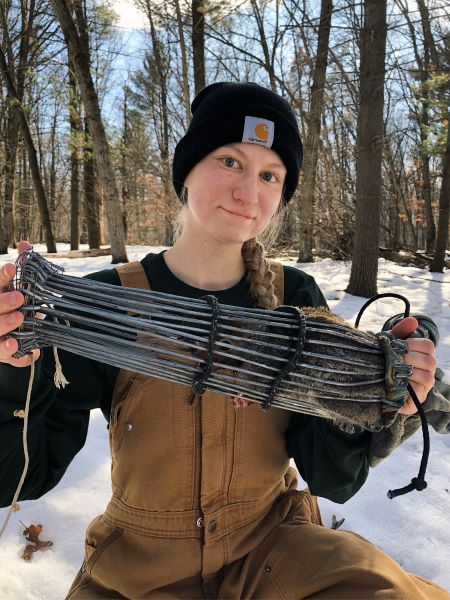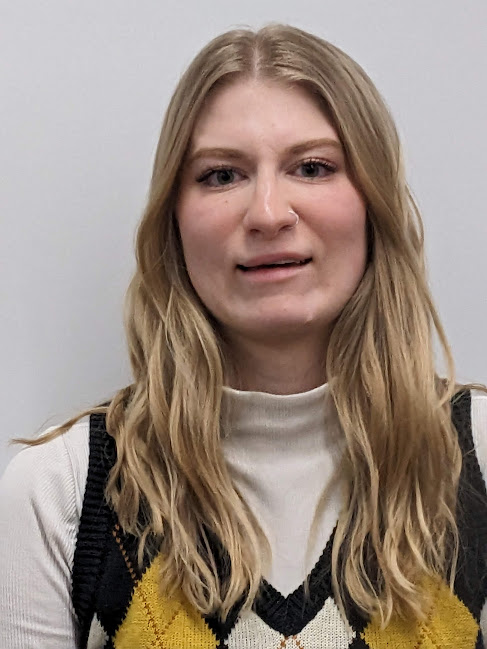by Barbara Dixson
As the Grey Squirrel Project gained momentum in its Schmeeckle Reserve location, Maddie Hartlaub joined as a co-leader. “It was great!” Maddie says. She became project leader for three years and got in three full field seasons before her December 2022 graduation. Like Dan Meyers, Maddie was looking for research experience. “I knew I wanted to work with mammals,” she explains. “I like this project a lot because it’s guaranteed animal handling experience.” Whereas Dan’s interest focused on environmental factors like trapping success, temperature, time, type of habitat, and cloud cover, Maddie realized she was especially interested in wildlife health. The co-leaders and volunteers weigh the squirrels, record their age and sex, assess their overall health, and ear tag them. Maddie relishes “all we can explore with the data.”

A question Maddie has mulled concerns the body condition of recaptured squirrels versus those who don’t return to the traps. Is she seeing a pattern that the recaptured ones are less well nourished? Could they overlook the risk of being trapped in order to get to the high calorie (and delicious!) oats and peanut butter bait? Interesting questions to ponder. And another interesting question concerns squirrel survivorship year to year, a question which this fourth year of solid data should begin to illuminate.
When Maddie joined the squirrel project, she wasn’t sure of her career goals. Then, last summer, she took a field job in wildlife health in South Dakota. I see that, among other strengths, Maddie has teaching talent, as she was able to explain to me very clearly why concern for the black-footed ferret—the most endangered mammal in the U.S.—meant that she spent her time studying ticks, fleas, and mites, and focusing quite a bit on prairie dogs. The blood suckers, I understood, are vectors of infection, including plague. Both the ferrets and the prairie dogs are susceptible, which is a double whammy for the ferrets, whose diet depends on eating prairie dog.
Maddie’s experience with the Gray Squirrel Project helped to make her a desirable candidate for her summer job, provided skills needed for that job, and will lead in January of 2024 to her becoming Shelli Dubay’s graduate assistant as Maddie works towards her master’s degree. She already knows that for her thesis she’ll study tularemia, a tick borne disease which affects rabbits here in Central Wisconsin, as well as South Dakota’s ferrets. Looking back on the project which helped to launch her on this trajectory, Maddie reflects, “it was nice to be able to explore my interests within the project.”
